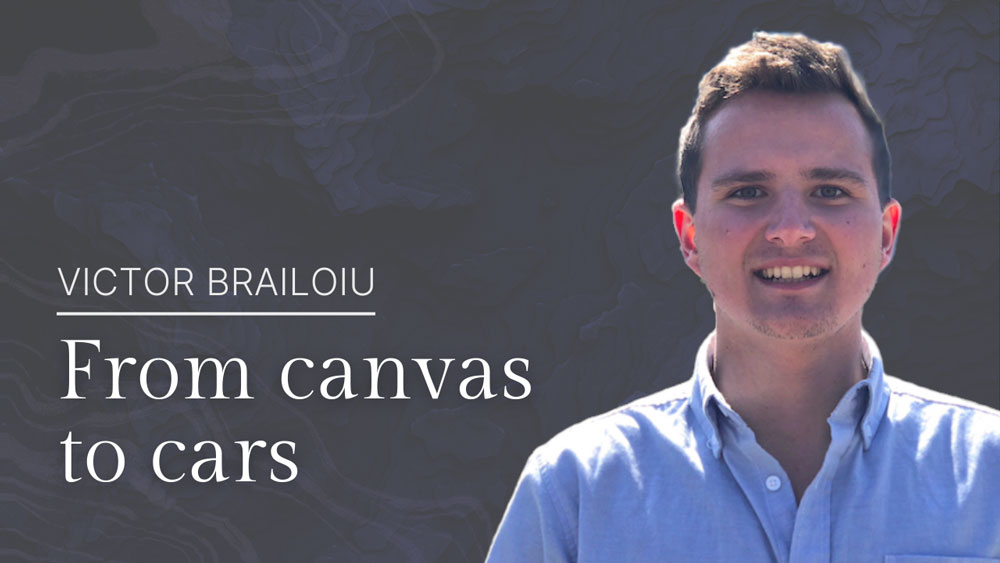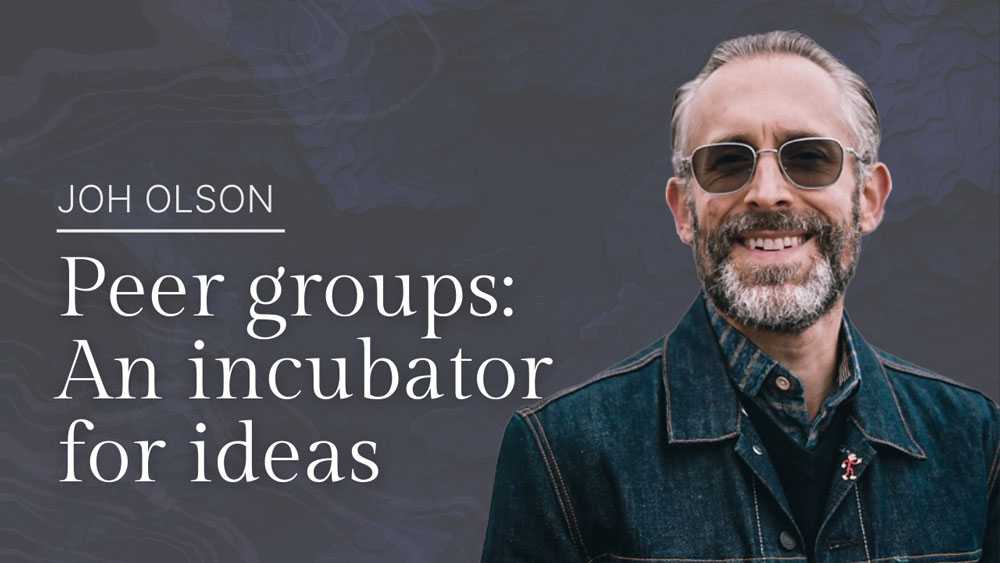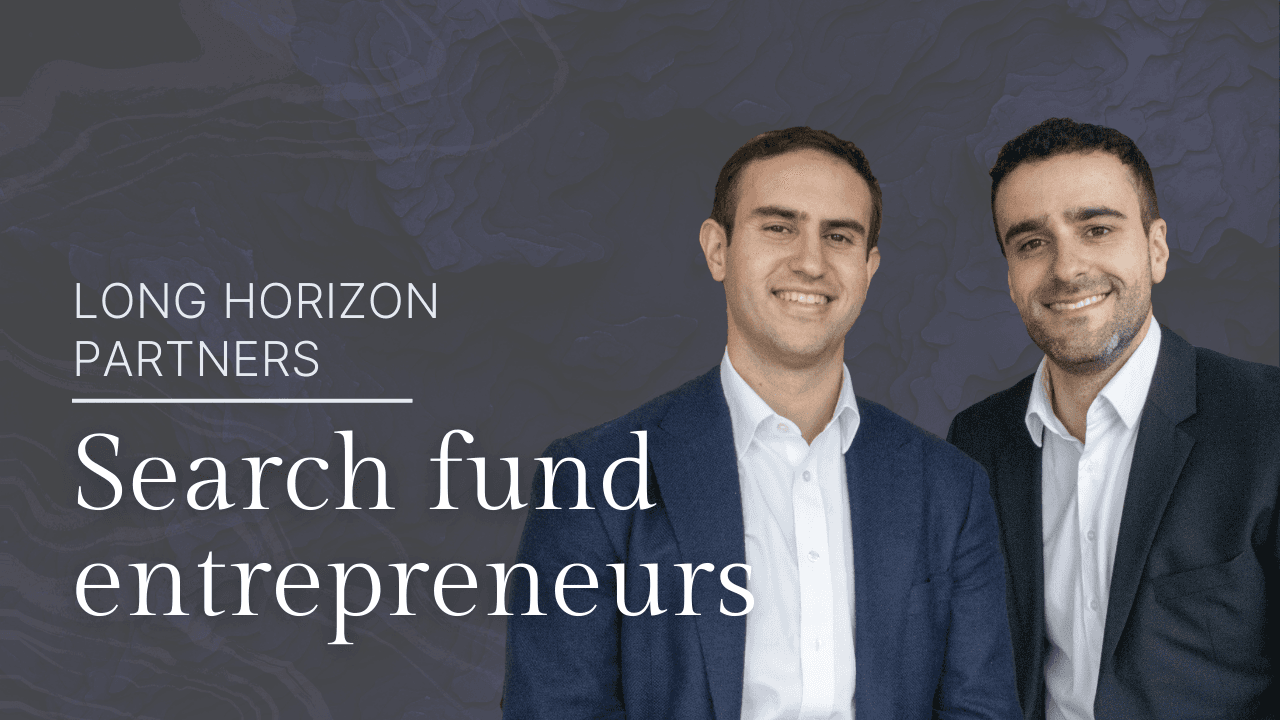Samanah Ali
9
min read
Entrepreneurial Canvas: Art to Uber
Victor Brailoiu
Senior Associate, Strategy & Planning Uber
Highlights
Victor Brailoiu embarked on his entrepreneurial journey by co-founding an innovative online art marketplace alongside his brother. While this venture didn’t ultimately work out, it served as his entry point into the world of entrepreneurship, equipping him with invaluable lessons for the next phase of his journey.
From tapping into the art industry to working as a strategy consultant in the Middle East, Brailoiu’s story takes a captivating turn as he navigates from the world of entrepreneurship to a role at Monitor Deloitte. He describes this experience as a turning point in his career, working with multinational business leaders in the Arab world.
Laying the foundation for artistic expansion in Saudi Arabia, his e-commerce expertise equipped him with the skill set required to carve a path toward securing a pivotal role within one of the globe’s most rapidly expanding enterprises.
Venturing into a Thriving Industry
Attaining a significant position with Uber, a dynamic $90 billion enterprise that revolutionized the way people travel, wasn’t an overnight accomplishment for Victor Brailoiu. Having ventured into diverse industries, this dedicated business enthusiast always had a knack for pushing boundaries. Transportation wasn’t even his forte at the start of his journey. It took an immersion into the art industry, encountering eye-opening realities, and a transformative journey to the Middle East for him to unleash his strategic business prowess.
It all began with a romantic gesture. Brailoiu’s brother, Dimitrie, was looking to hire someone to create a custom piece of jewelry for his wife—a special necklace with a specific material and shape in mind. Although it didn’t take long before he realized that putting together such a unique gift was harder than he had initially thought, it did trigger a curiosity that eventually gave rise to his first foot into the world of entrepreneurship with his brother. Finely, an online art marketplace, was established.
“He [Dimitrie] was thinking through, ‘I wonder what other industries this applies to,’ and art is what jumped out to mind, [as it is] a larger industry overall in terms of value or pieces transacted and just generally an industry that we’re more familiar with.”
Brailoiu called this a “light bulb moment,” which prompted them to connect with around 500 artists who may be interested in creating custom artwork for clients on a commission basis.
“A customer will request a very specific [item], they’ll say, ‘I want a painting of my dog,’ and then we made it a little bit easier by having pre-chosen selections of dimensions of artistic style, so on and so forth. Artists would see that request that the customers put on the website and then respond to the request saying, ‘I’m the right artist for this, that and the other reason,’ and then multiple artists would respond.”
Tapping into the art industry was quite attractive to them as the global art market grew by six percent in 2018 from the previous year, around the time when they started this business, to $67.4 billion. According to the Art Basel and UBS Global Art Market Report 2023, this value has only increased. Global art sales increased by three percent year-over-year to an estimated $67.8 billion. Remarkably, it rebounded robustly after the pandemic’s peak, surpassing its 2019 pre-pandemic level.
Finally found itself in a thriving sector.
What came next was a commitment to work full-time on this project for about a year. In their very first month, they received approximately $20,000 worth of art requests.
The next month came with another $20,000.
Then, the month after that had the same results. And then the month after that, and the one after that… until it became a problem.
During the initial funding stage (pre-seed), as they developed an idea into a concrete plan, the two brothers realized that their business was progressing in a linear manner. This posed a significant challenge as investors were looking for more rapid growth and didn’t see this new business as having the potential to grow large enough for a venture capital investment.
Five to six months of linear growth later, they tried to drastically shift their customer acquisition model, which involved onboarding a host of commission-based salespeople who would receive half the fee received from any sale they landed.
Unfortunately, it didn’t work out.
Their only option now was to shut it down—a disappointment that Brailoiu still feels today. “I think the itch after starting and having to shut down the art business that we were talking about a couple of years ago, yeah, that itch hasn’t gone away,” he said.
Despite reaching a dead end, Brailoiu learned some valuable lessons from the experience that translated well into his next venture. Finely’s marketing strategy was heavily dependent on Google search engine marketing. They spent around $50 for every $15 of sales that would come through their platform. A more organic word-of-mouth strategy is what he finds would have been wiser.
“We should have focused more on bringing that $50 down and substantially much earlier on, which I don’t think would have foreseeably happened with the levers that we were pulling of very traditional marketing methods.”
Right Place, Right Time
Despite reaching a dead end, the experience paved the pathway for what was about to be a major leap in his career. In pursuit of becoming someone with a well-rounded background and with an interest in working abroad, testing the grounds of consultancy in the Middle East seemed like a good fit—his next stop—Dubai.
Unknowingly, Brailoiu caught himself in the middle of a drastic shift in the Middle East. “Coincidentally, I didn’t know at the time, but the Middle East is going through a very robust investment in cultural and artistic offerings.”
The UAE has been heavily investing in art, culture, and tourism since the early 21st century. According to a 2018 article from Smithsonian Magazine, the country’s three largest emirates embraced art in different ways. Dubai notably transformed into a center for commercial art. Launched in 2006, Art Dubai became one of the world’s largest globalized art fairs and played a pivotal role in introducing art patrons to Middle Eastern Art. In 2018, it featured 78 galleries from 42 countries.
Due to uncertainties about the long-term sustainability of the oil industry, the Middle East has been actively seeking to broaden its economy and reduce its reliance on oil as the main source of wealth (Fattouh et al., 2021).
“The Middle East broadly is very focused on diversifying their economies from oil, and then also just broadly improving quality of life and touristic offerings for folks who are living there and visiting there, and then art is a great channel for that.”
According to export.gov, Abu Dhabi holds 94 percent of the UAE’s oil reserves. With this in mind, Dubai had to figure out a way to make its own unique mark both locally and internationally. That is when the ruler of Dubai, Sheikh Rashid bin Saeed Al Maktoum, decided to invest in infrastructure and built the first airport in 1960.
This new focus created a domino effect for the development of more infrastructure projects, leading to a boom in tourism. Dubai is now known as one of the world’s top tourist destinations and represents around 20 percent of UAE’s GDP (Fattouh et al., 2021).
“Dubai has been the most forward-looking in the region in terms of how do we diversify our economy from oil, and has been probably the most adamant in ‘let’s build the biggest, the best, the things that will make folks travel from across the world to come to this place.’”
It’s what took them out of the linear cycle.
Business in this city is also predominantly carried out in English, so Brailoiu didn’t experience much of a culture shock there. In fact, according to the World Population Review, only 15 percent of the residents there are native. The rest of the 85 percent are expatriates.
Motivated by a desire to travel, he immediately sent out a bunch of messages to consultants in the region on LinkedIn in hopes of landing an opportunity that would give him the experience he yearned for.
After several attempts, he finally hit the gold mine. Brailoiu secured a role as a Business Analyst at Monitor Deloitte, a consulting firm specializing in guiding leaders through vital business choices. While it may seem like he took a leap from his former business in art, it really wasn’t. His experience in that sector allowed him to build on the lessons he learned as he continued to focus on projects related to culture and art, which he worked on for 80 percent of his time there.
This really opened his mind to a new horizon, meeting people he likely would not have gotten a chance to meet otherwise.
“I’d be in Saudi Arabia, working with a team that is somebody from the United States, somebody from the UK, two people from Lebanon and one person from Germany. So just getting, like, you get a whole host of experience of how business is conducted in a bunch of different countries just very warmly through interactions with your colleagues, which I always found to be amazing.”
This also allowed him to get a glimpse into what’s hot in the industry of a different country. One thing he noticed was how different organizations in the Arab region were focused on investing their resources to put Saudi Arabia higher up on the tourism totem pole of the world. His big takeaway is, “People are more similar than dissimilar, which sometimes takes having to move and work in a completely different place to realize that.”
Laying the Groundwork for Success
There is a common phrase used by Monitor Deloitte employees: “Only at Deloitte.”
Brailoiu attests to this as he believes that what he learned in his experience working for Monitor Deloitte in the Middle East, he couldn’t have learned anywhere else. There were
many times when he had to work with limited data and develop an understanding of the industry. For example, he would be tasked with figuring out the economic value of different aspects of art, including visual arts and auctioning.
With Saudi Arabia very focused on investing in different sectors of art, Brailoiu took part in discussions that asked questions like “Where do we start? Which sector comes first?”
“A lot of these sectors hadn’t really existed before. You’re kind of building them from the ground up. So, like, a lot of putting their very regimented thinking into aspects of business that have very limited data and are somewhat subjective, by nature, I think was the really cool takeaway experience that I think would have only been possible on those projects at that time in those countries.”
To get an idea of what he’s working with, artwork that is worth between $10 million to $30 million is often treated as investments, and this is becoming an increasing trend, particularly during the COVID-19 pandemic. This type of fractional investing in art, which refers to owning a certain percentage of the artwork, is known as masterworks. When a painting gets old in five years, investors reap what they sowed. This is quite similar to how many other luxury items, like watches, are invested in and sold. The formula to determine the value of a particular piece of artwork is usually generated by calculating how many pieces are getting sold, times what the estimated average price seems to be.
Working on a few projects in the Middle East that related to e-commerce proved very useful in the next phase of his career. He set up an all-encompassing platform for selling, viewing, or buying tickets to museums, and this, to him, “felt like a bit of a redemption round on my personal entrepreneurial experience.” In his venture to Saudi Arabia, he helped set up investment funds that would deploy a substantial amount of money across different artistic sectors to rapidly grow artistic offerings and make it more financially viable within the country. This was a major breakthrough as it laid the groundwork for artistic growth in the future.
Eventually, due to the pandemic, staying indoors didn’t allow him to visit family or friends, and neither did it allow him to have a holistic travel experience anymore. Although this brought an end to his journey in the Middle East, the lessons and experience he attained working as a consultant in multiple Middle Eastern countries translated into his current role with Uber.
His rich experience also encouraged him to mentor others who are in a similar position to where he stood back when he worked on his online art marketplace business. He does this through an affiliate organization of the Small Business Administration called SCORE, which has chapters in around 300 cities in the United States. Volunteers in SCORE partner up with local small business entrepreneurs and help them out in different stages of their business. His favorite part of volunteering with this organization for around a year and a half is the breadth of industries and being able to learn so much just by working with businesses in the different lifecycle stages they are at.
“You have that whole matrix of very different stages of where the business is at, across a bunch of different industries, and I find that to be just so fun and a very good learning experience to talk through all of those different combinations of businesses.”
Brailoiu has not given up on his inner calling towards entrepreneurship and is actively exploring different industries to tap into. He highly recommends new small business owners take advantage of mentorship opportunities to be able to accelerate the process of establishing a thriving business.
References
Dubai Tourism Industry—Where Does The Emirate Go From Here?. Frost & Sullivan. (2018, February 1). https://www.frost.com/frost-perspectives/dubai-tourism-industrywhere-does-emirate-go-here/
Fattouh, B., & Sen, A. (2021). Economic Diversification in Arab Oil-Exporting Countries in the Context of Peak Oil and the Energy Transition. Oxford Institute for Energy Studies. https://www.oxfordenergy.org/publications/economic-diversification-in-arab-oil-exporting-countries-in-the-context-of-peak-oil-and-the-energy-transition/
Smithsonian Magazine (n.d.). UAE: Center for Art in the Middle East. https://www.smithsonianmag.com/sponsored/uae-center-for-art-middle-east-180968375/
McAndrew, C. (2023). The Art Basel and UBS Global Art Market Report 2023. Contemporary Art. https://www.ubs.com/global/en/our-firm/art/collecting/art-market-survey.html#artmarketreport2023
United Arab Emirates - Oil and Gas Field Machinery and Services. Export.gov. (2019, August 7). https://legacy.export.gov/article?+id=United-Arab-Emirates-Energy-Power
World Population Review . (2023). Dubai population 2023. https://worldpopulationreview.com/world-cities/dubai-population



